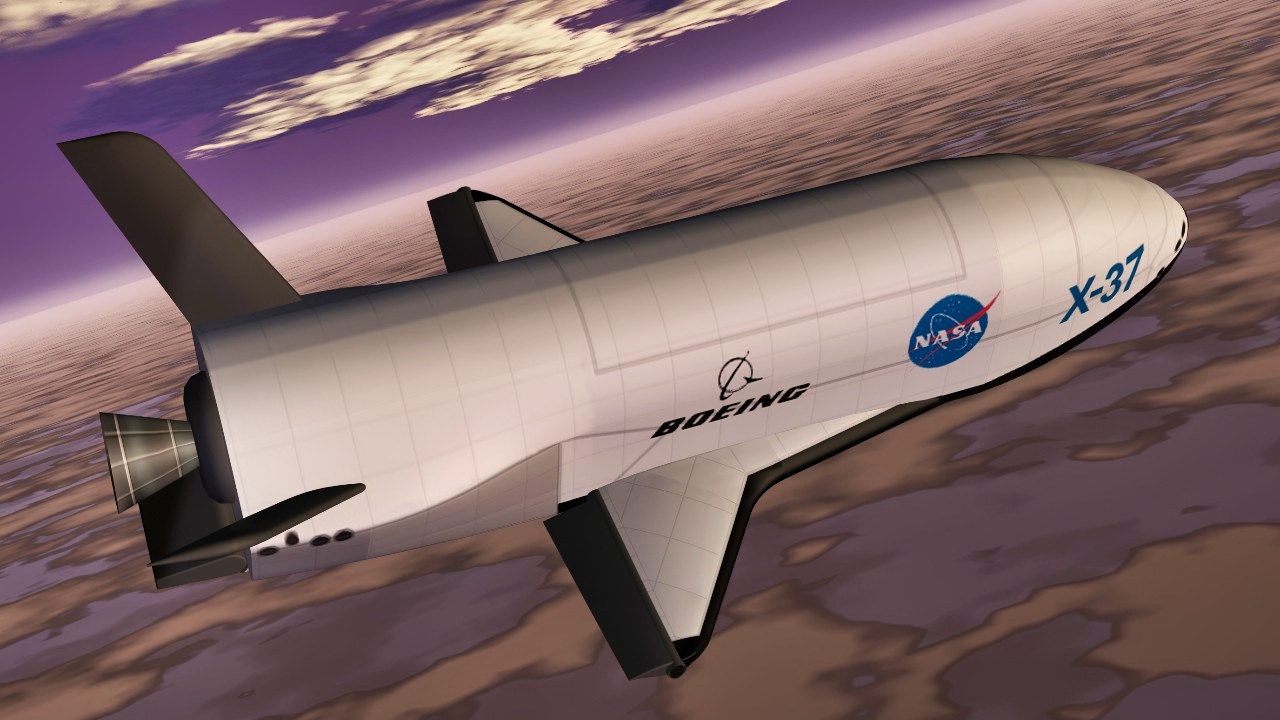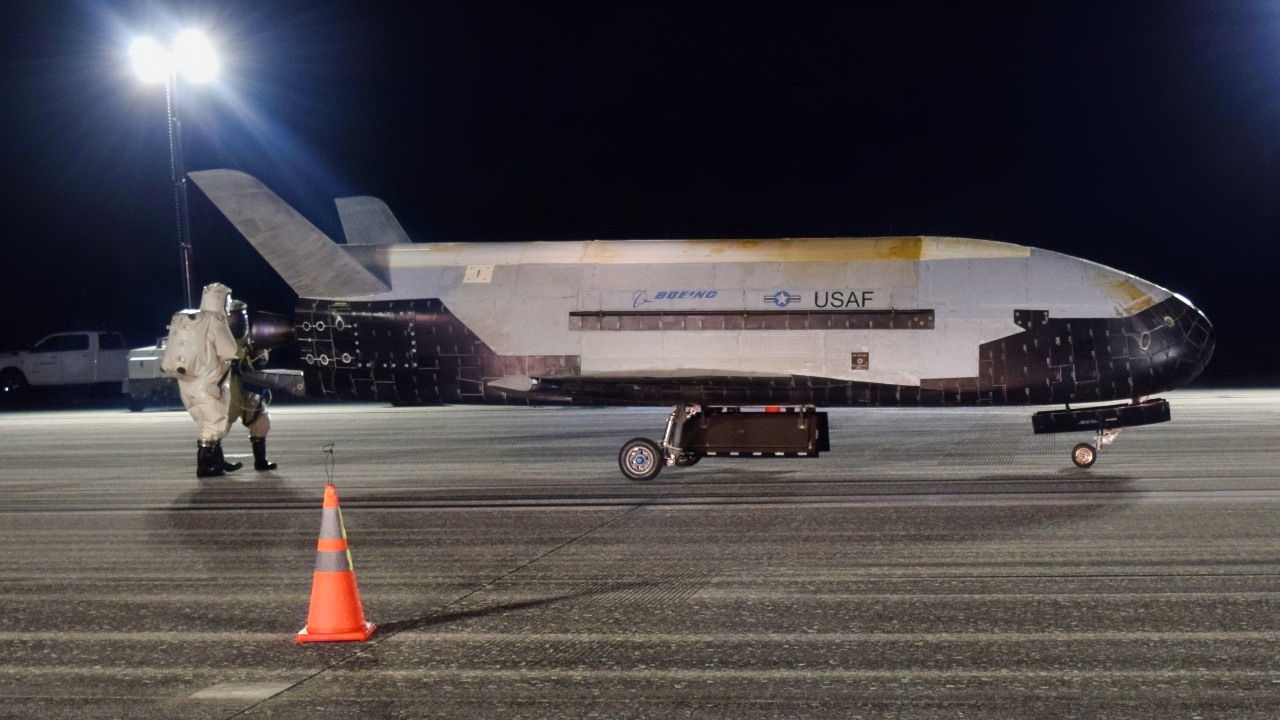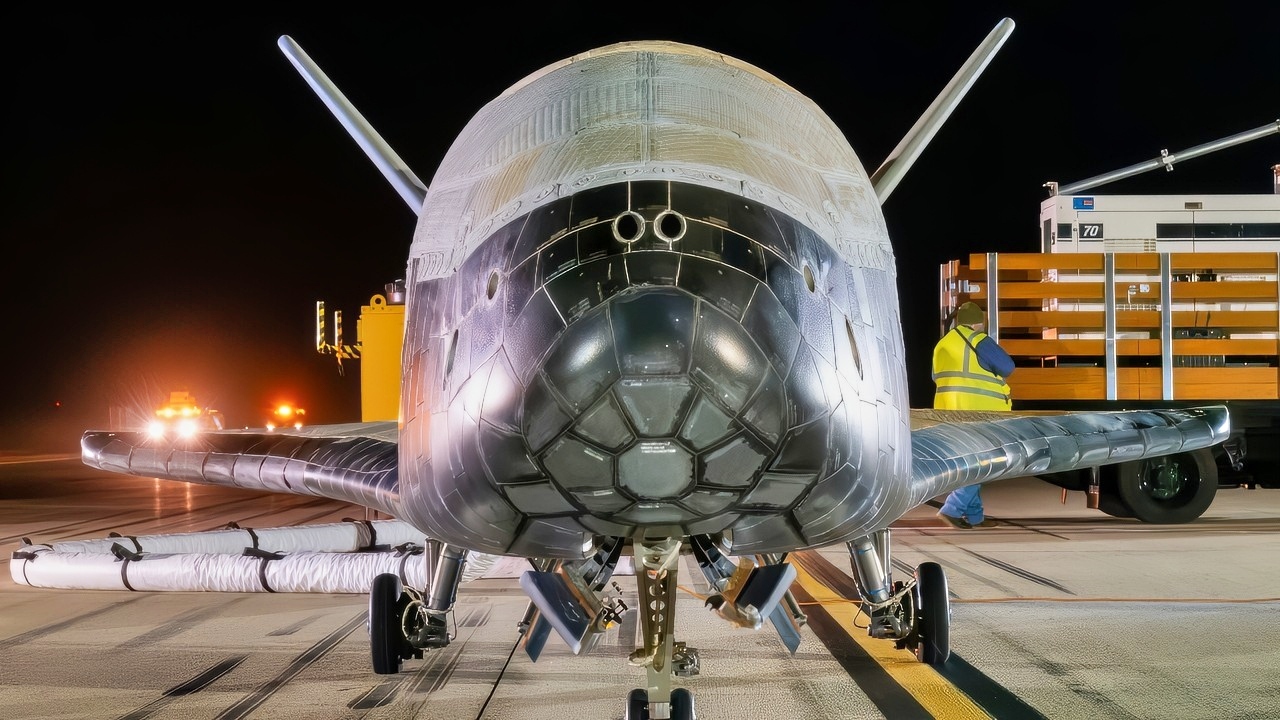Key Points and Summary – The U.S. Space Force’s X-37B just began its eighth mission atop a SpaceX Falcon 9 to test next-gen tech, including laser communications and a record-grade quantum inertial sensor that could one day complement or back up GPS.
-Beijing’s analysts cast the reusable spaceplane as a potential “space killer” and pillar of U.S. prompt global strike, even as China advances its own Shenlong vehicle and anti-satellite capabilities.

X-37B. Image Credit: Creative Commons.
-Meanwhile, governments are shifting space from cooperation to warfighting: global space-defense outlays hit $73.1B last year, with the U.S. leading by far. The result is a fast-intensifying competition to control critical orbits and services.
China Fears the X-37B
Last month, the X-37B launched its eighth mission, via SpaceX. According to the announcement from the U.S. Space Force, the mission, launched on a SpaceX Falcon 9 rocket, focused on “a wide range of test and experimentation objectives.” The launch of the uncrewed vessel was successful, USSF said.
The mission objectives included “next-generation technologies, including laser communications and the highest performing quantum inertial sensor ever tested in space.” Those quantum sensors could lead to technologies that eventually replace GPS.
The Air Force Research Lab and the Defense Innovation Unit participated in the mission.
Per Boeing, the X-37B has completed seven missions, “logging over 1.3 billion miles and spending thousands of days in space.”
One foreign adversary, however, sees things a bit more nefariously.
The View From China
The South China Morning Post reported this week that Chinese researchers see the U.S. as attempting to “dominate space” with the X-37B, which could be used as a “space killer.”
“Analysts noted that the X-37B’s frequent launches and mission iterations highlight the US military’s ambition to accelerate the development of space weapons and pursue space supremacy,” Wang Tiantian and Feng Songjiang of China’s Space Engineering University’s Space Security Research Centre said.
“The X-37B’s dynamic response capabilities, combined with its onboard weapons, will make it a key component of the US military’s ‘Prompt Global Strike’ system in the future,” they added.
China’s Own X-37B
Per an analysis by Rude Baguette, China’s own answer to the X-37B is the Shenlong craft, which has now undergone three orbital tests, and on the last one, it was said to have transmitted signals over North America.
On the most recent mission, the Shenlong craft spent 268 days in space.
“This development signals Beijing’s commitment to expanding its military reach into space, further illustrating the growing competition between major powers,” Rude Baguette reported. “As these advancements unfold, they underscore the need for international dialogue and cooperation to prevent potential conflicts in space.

The Air Force’s X-37B Orbital Test Vehicle Mission 5 successfully landed at NASA’s Kennedy Space Center Shuttle Landing Facility Oct. 27, 2019. The X-37B OTV is an experimental test program to demonstrate technologies for a reliable, reusable, unmanned space test platform for the U.S. Air Force.
China is also “ramping up its ability to target satellites, aimed at weakening or denying adversaries access to space,” the SCMP report said.
Begun, the Space War Has
Meanwhile, per an International Business Times analysis published on Wednesday, spending is soaring on space defense spending, with Russia getting into the act as well. It was a big topic at the recent Space Defence and Security Summit in Paris.
Per the IBT report, there are already 200 anti-satellite weapons circling Earth, and expenditures on global space defense spending reached $73.1 billion last year.
According to Defense News, leaders at the summit declared that space has become a “war-fighting domain,” whereas similar summits in the past have emphasized cooperation. Per Novaspace, which organized the summit, governments around the world “spent more of their space budgets on defense than on civil space” in the last two years.
“What you see is that it is now the military domain that is leading,” Hermann Ludwig Moeller, director of the European Space Policy Institute, told Defense News. “This is really clear compared to last year; the language and what is behind the language has shifted.”
Russia is upping its capabilities in that sphere, including “ orbiters that pack smaller satellites like a Russian doll,” Defense News said.
“The rule-based international order in space is nearly over,” Brig. Gen. Jürgen Schrödl, of the German Ministry of Defence’s strategy and operations department, said at the summit. “We have to accept that space is a tested domain, is a war-fighting domain, is becoming a war-fighting domain.”
The report added, though, that the U.S. has the spending advantage, spending $53.1 billion on space defense and security last year, followed by China with $9.3 billion, Russia with $2.3 billion, and France with $2.1 billion.
About the Author: Stephen Silver
Stephen Silver is an award-winning journalist, essayist, and film critic, and contributor to the Philadelphia Inquirer, the Jewish Telegraphic Agency, Broad Street Review, and Splice Today. The co-founder of the Philadelphia Film Critics Circle, Stephen lives in suburban Philadelphia with his wife and two sons. For over a decade, Stephen has authored thousands of articles that focus on politics, national security, technology, and the economy. Follow him on X (formerly Twitter) at @StephenSilver, and subscribe to his Substack newsletter.
More Military
The Massive B-36J Bomber Has a Message for the U.S. Air Force
Russia’s Su-47 Fighter: Moscow Only Made 1 For Good Reason
B-52J vs. B-21 Raider: The Air Force Might Have a Bomber Problem
